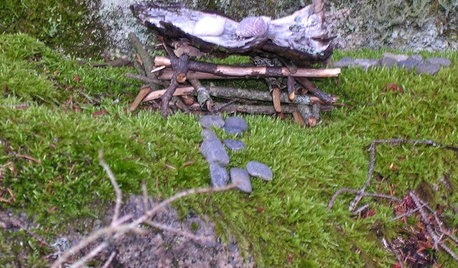What is a witches broom and why is it special?
futurenurse
18 years ago
Related Stories

SHOP HOUZZHouzz Products: Great Wedding Gifts for Modern Couples
Give newlyweds a gift as memorable as the day itself, to have and to hold in a special place at home
Full Story
MOTHER’S DAYWhat to Do for Mom Around the House on Mother’s Day
Show appreciation for your mother and make her day extra special with these ideas
Full Story
DECORATING GUIDESGet Organized: A Place for Your Pets' Stuff
Live in style with your cat or dog thanks to special places for their food, bed and toys
Full Story
HOLIDAYSHalloween and Fall Decorating Ideas to Put You in the Spirit
From easy to involved, for the garden and all over the home, these projects and party ideas will conjure a frightfully festive mood
Full Story
VICTORIAN DESIGNHouzz Tour: San Francisco’s Haas-Lilienthal House
Get a rare behind-the-scenes glimpse of this storied Victorian mansion from its decade-long caretaker
Full Story
PRODUCT PICKSGuest Picks: Out-of-the-Ordinary Cabinet Pulls and Knobs
Whether your decor is traditional, eclectic, rustic or offbeat, this cabinet hardware can show it off and take it into another realm
Full Story
BLACKColor Guide: How to Work With Black
Take a walk on the dark side — your home has nothing to fear with this color when you know how to use it
Full Story
FUN HOUZZSomething a Little Different: Fairy Houses
Miniature abodes crafted for otherworldly creatures capture the imagination
Full Story
CLOSETSHouzz Call: Is Your Closet a Storage Powerhouse?
We want to see how you are making the most of your closet storage areas. Post pictures and tell us how you’ve organized them
Full Story
DECORATING GUIDESCurvy, Concealed Wall Storage in Sydney
Valuable storage space hides behind this stylish feature in the main living areas of this apartment
Full Story





mgood4u
futurenurseOriginal Author
Related Professionals
Garden City Landscape Architects & Landscape Designers · Summit Landscape Architects & Landscape Designers · Burlington Landscape Contractors · Lakeland Landscape Contractors · Wilmington Landscape Contractors · Allentown Landscape Contractors · Hilo Landscape Contractors · Leicester Landscape Contractors · Mahwah Landscape Contractors · New Brighton Landscape Contractors · North Potomac Landscape Contractors · Nutley Landscape Contractors · Snoqualmie Landscape Contractors · Arlington Handyman · Millbury Handymanmgood4u
Soeur
rhizo_1 (North AL) zone 7
FlytrpL8E
nandina
Marilyn_MO
zjones
lucky_p
kcassidy
Vera_EWASH
Mike Larkin
vera_eastern_wa
vera_eastern_wa
kcassidy
granbobbie